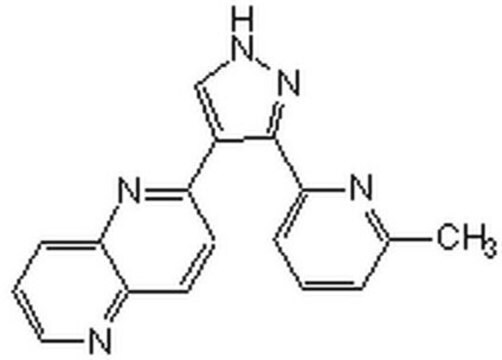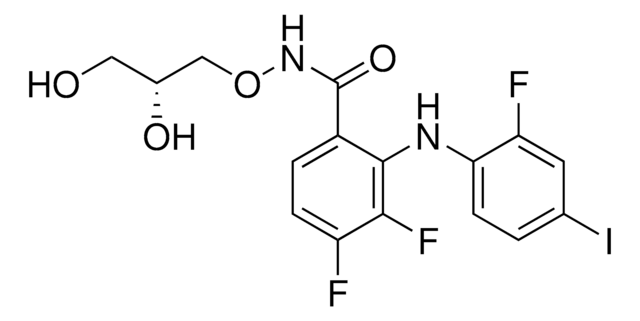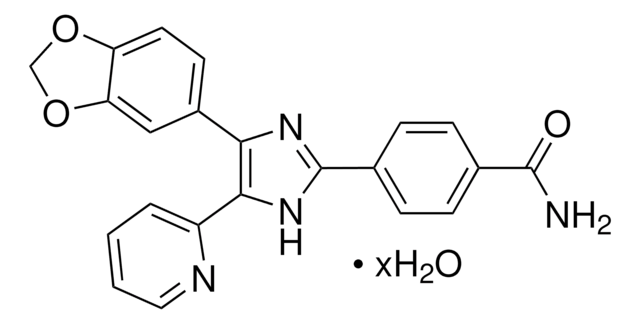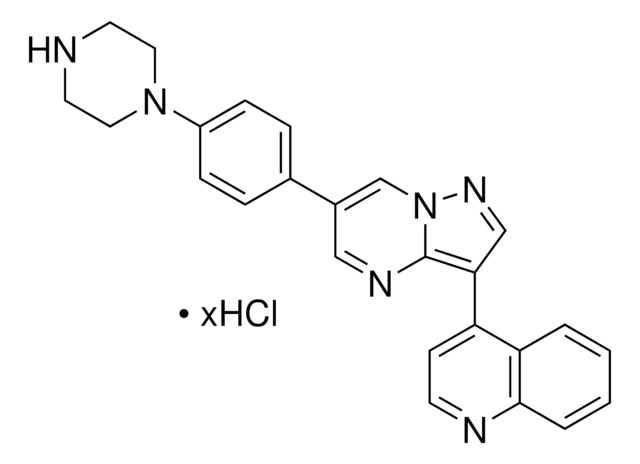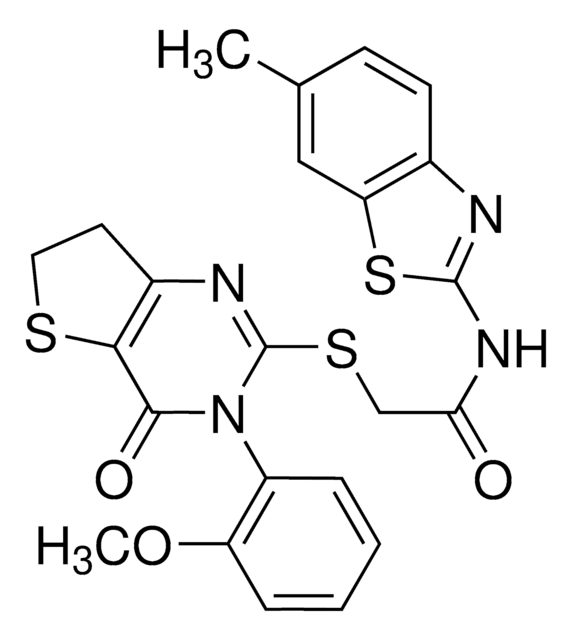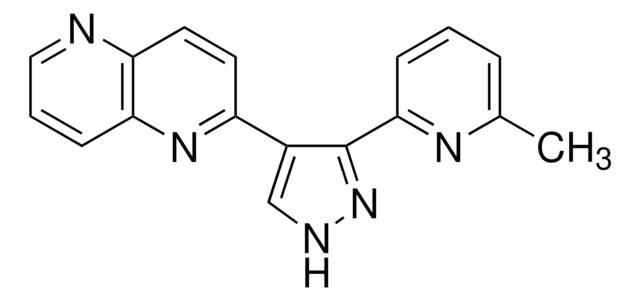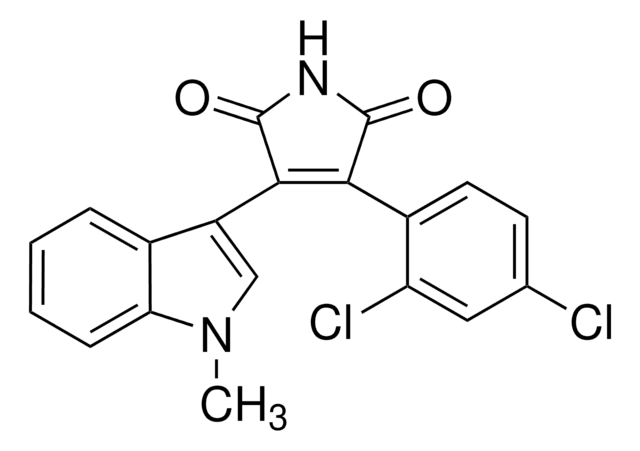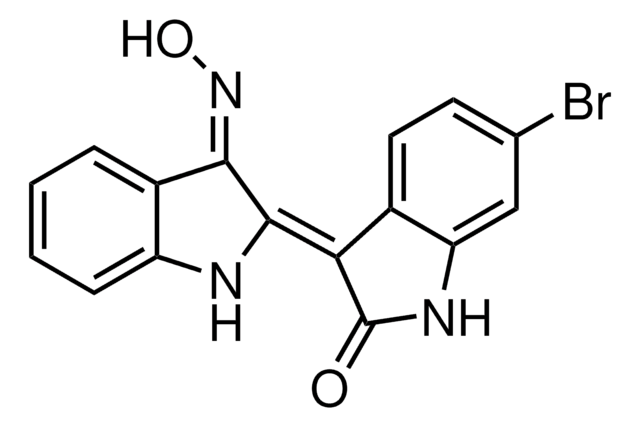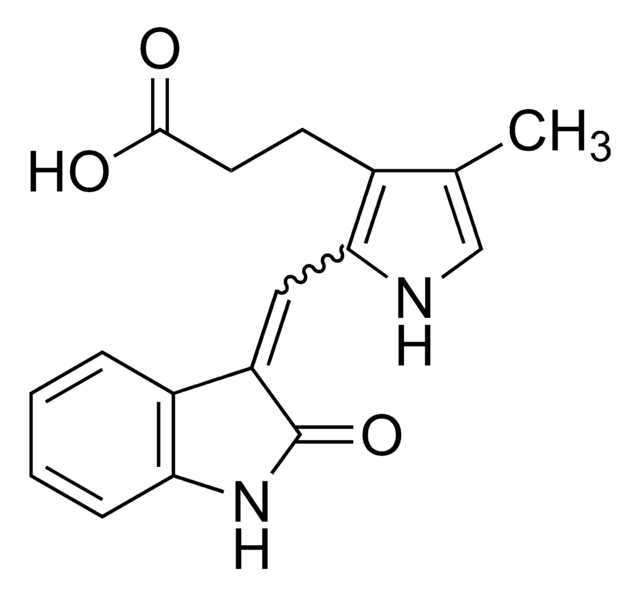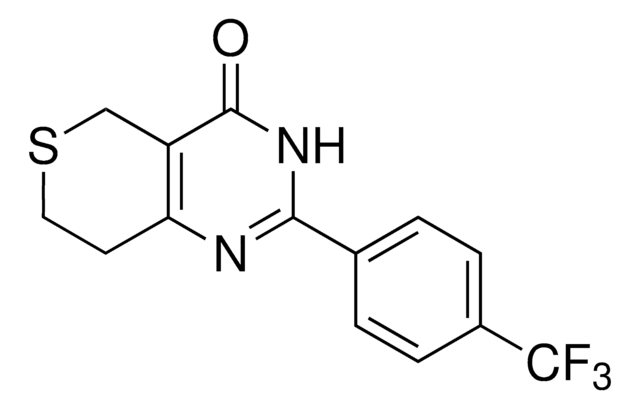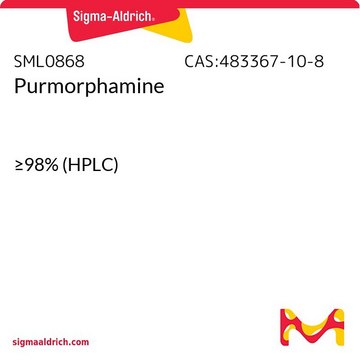SML1046
CHIR99021
≥98% (HPLC), powder, GSK-3 inhibitor
Synonym(s):
6-[[2-[[4-(2,4-Dichlorophenyl)-5-(5-methyl-1H-imidazol-2-yl)-2-pyrimidinyl]amino]ethyl]amino]-3-pyridinecarbonitrile, CT99021
About This Item
Recommended Products
Product Name
CHIR99021, ≥98% (HPLC)
Assay
≥98% (HPLC)
form
powder
color
white to light brown
solubility
DMSO: 2 mg/mL, clear (warmed)
storage temp.
−20°C
SMILES string
ClC(C=C1Cl)=CC=C1C2=NC(NCCNC(N=C3)=CC=C3C#N)=NC=C2C4=NC(C)=CN4
InChI
1S/C22H18Cl2N8/c1-13-10-29-21(31-13)17-12-30-22(32-20(17)16-4-3-15(23)8-18(16)24)27-7-6-26-19-5-2-14(9-25)11-28-19/h2-5,8,10-12H,6-7H2,1H3,(H,26,28)(H,29,31)(H,27,30,32)
InChI key
AQGNHMOJWBZFQQ-UHFFFAOYSA-N
General description
Application
- in cocktail with small molecules to convert human lung fibroblast cells into neurons
- as a culture medium supplement in potassium supplemented simplex optimization medium (KSOM) for the culture of blastocysts
- for chronic inhibition of GSK-3 to investigate its role in corticogenesis
Biochem/physiol Actions
also commonly purchased with this product
Signal Word
Warning
Hazard Statements
Precautionary Statements
Hazard Classifications
Acute Tox. 4 Oral
Storage Class Code
11 - Combustible Solids
WGK
WGK 3
Flash Point(F)
No data available
Flash Point(C)
No data available
Choose from one of the most recent versions:
Already Own This Product?
Find documentation for the products that you have recently purchased in the Document Library.
Customers Also Viewed
Articles
Naive pluripotent stem cells are located within the epiblast of mature blastocysts. These primitive “ground-state” cells may be cultured in vitro using specialized media and small molecule inhibitors.
Organoid culture products to generate tissue and stem cell derived 3D brain, intestinal, gut, lung and cancer tumor organoid models.
Protocols
Step-by-step culture protocols for neural stem cell culture including NSC isolation, expansion, differentiation and characterization.
Our team of scientists has experience in all areas of research including Life Science, Material Science, Chemical Synthesis, Chromatography, Analytical and many others.
Contact Technical Service

